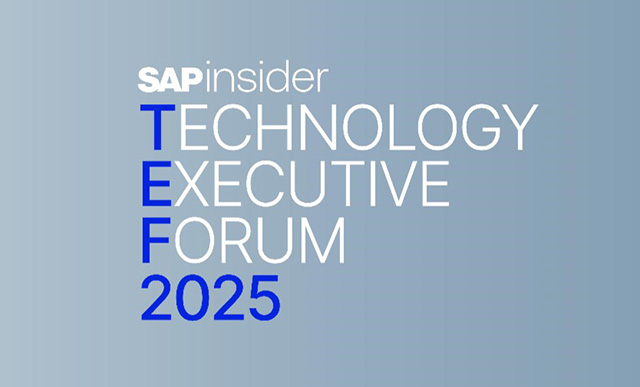SAP Disaster Recovery
Filter By
Browse By
- SAP Analytics and AI
- SAP Application Development and Integration
- All SAP Application Development and Integration
- SAP ABAP
- SAP ABAP Development Tools
- SAP ABAP Test Cockpit
- SAP API Management
- SAP BAPI
- SAP Basis
- SAP BRF
- SAP Business Application Studio
- SAP CMS
- SAP Design Studio
- SAP Development Tools
- SAP DevOps
- SAP EAI
- SAP EDI
- SAP Extension Suite
- SAP Fiori
- SAP Fiori Elements
- SAP Integration Suite
- SAP Low Code Application Development
- SAP Low Code Automation
- SAP Netweaver
- SAP Release Management
- SAP UI5
- SAP Web Application Server
- SAP Web IDE
- SAP Business Process Management
- SAP Center of Excellence
- SAP CIO
- SAP Customer Experience
- SAP Data and Data Management
- All SAP Data and Data Management
- SAP BW
- SAP BW/4HANA
- SAP Crystal Reports
- SAP Data Archiving
- SAP Data Center
- SAP Data Governance
- SAP Data Integration
- SAP Data Migration
- SAP Data Quality
- SAP Data Services
- SAP Data Strategy
- SAP Data Visualization
- SAP Data Warehouse Cloud
- SAP DMS
- SAP Document Control
- SAP EIM
- SAP ETL
- SAP ETL Tools
- SAP HANA
- SAP HANA Administration
- SAP HANA Deployment Infrastructure
- SAP HANA Studio
- SAP Master Data
- SAP Master Data Governance
- SAP MDM
- SAP Enterprise Architect
- SAP Enterprise Asset Management
- SAP ERP
- SAP Finance
- All SAP Finance
- SAP Accounting
- SAP AR AP
- SAP Asset Accounting
- SAP Billing Systems
- SAP BPC
- SAP BRIM
- SAP Cash Management
- SAP Central Finance
- SAP Controlling
- SAP COPA
- SAP Cost Center Accounting
- SAP Currency Risk
- SAP e-invoicing
- SAP FICO
- SAP Finance Automation
- SAP Advanced Financial Closing
- SAP Financial Consolidation
- SAP Financial Planning
- SAP FX Risk
- SAP General Ledger
- SAP Global Tax Management
- SAP Hyperion
- SAP Order to Cash
- SAP Payment Processing
- SAP Profitability Analysis
- SAP Rebate Management
- SAP S/4HANA Finance
- SAP SWIFT Compliance
- SAP Treasury Management
- SAP Universal Journal
- SAP Governance Risk and Compliance
- SAP Human Capital Management
- SAP Intelligent Technologies
- SAP Platform and Technology
- All SAP Platform and Technology
- SAP Business Technology Platform
- SAP Cloud
- SAP Cloud Connector
- SAP Cloud Integration Platform
- SAP Cloud Migration
- SAP Cloud Platform
- SAP Cloud Providers
- SAP Cloud Strategy
- SAP Digital Signature
- SAP Container Platform
- SAP HANA Enterprise Cloud
- SAP Digital Asset Management
- SAP Smart Forms
- SAP HEC
- SAP Digital Integration Hub
- SAP Hyperscalers
- SAP Infrastructure
- SAP Messaging
- SAP Quality and Testing
- SAP Security
- SAP Spend Management
- SAP Supply Chain Management
- All SAP Supply Chain Management
- SAP APO
- SAP Asset Management
- SAP Business Network
- SAP Digital Manufacturing Cloud
- SAP Digital Twin
- SAP EWM
- SAP IBP
- SAP Inventory Management
- SAP Label Printing
- SAP Logistics
- SAP Manufacturing
- SAP Manufacturing Automation
- SAP MES
- SAP MII
- SAP MM
- SAP MRO
- SAP MRP
- SAP Order Management
- SAP Plant Maintenance
- SAP PLM
- SAP Production Planning
- SAP S&OP
- SAP SD
- SAP SPM
- SAP Supply Chain Planning
- SAP Track and Trace
- SAP Transportation Management
- SAP System Administration
What is Disaster Recovery?
Disaster recovery is an organization’s method of regaining access to and functionality for its IT infrastructure following disruptive events, such as major equipment failure, natural disaster, cyberattack, or pandemic. It relies on the backup of data and computer processing capabilities at a remote location not affected by the disaster. In a disaster, the organization can restore data and computing functions to continue operations.
Disaster recovery focuses on IT systems supporting critical business functions instead of business continuity, which involves keeping all essential aspects of a business functioning despite significant disruptive events. Priorities and recovery time objectives should be developed during the business impact analysis. Technology recovery strategies should be designed to restore hardware, applications, and data in time to meet the business recovery needs.
What is Disaster Recovery?
Disaster recovery is an organization’s method of regaining access to and functionality for its IT infrastructure following disruptive events, such as major equipment failure, natural disaster, cyberattack, or pandemic. It relies on the backup of data and computer processing capabilities at a remote location not affected by the disaster. In a disaster, the organization can restore data and computing functions to continue operations.
Disaster recovery focuses on IT systems supporting critical business functions instead of business continuity, which involves keeping all essential aspects of a business functioning despite significant disruptive events. Priorities and recovery time objectives should be developed during the business impact analysis. Technology recovery strategies should be designed to restore hardware, applications, and data in time to meet the business recovery needs.
What is SAP Disaster Recovery?
SAP offers standard and enhanced disaster recovery service for SAP Business Technology Platform (SAP BTP), Neo environment. Data backups are stored at a disaster recovery site and contain all data stored in the SAP BTP’s data management and document services. According to SAP, any data not stored in these services cannot be recovered.
The SAP BTP Enhanced Disaster Recovery service provides asynchronous data replication to a remote disaster recovery region to improve the time for recovery. The service requires hardware setup and covers production applications running on SAP BTP in disaster recovery-enabled subaccounts. The setup requires configuration steps that the organization and the dedicated SAP team must perform in advance.
Further Resources for SAPinsiders:
Considerations for Disaster Recovery and Automated Failover Clusters for SAP HANA Infrastructures. In this SAPinsider Q&A, SUSE’s Peter Schinagl, Technical Architect, and Markus Gürtler, Technical Alliance Manager, answer questions regarding disaster recovery scenarios for SAP HANA infrastructure, automation solutions for failover, and system replication.
A Step-by-Step Configuration Guide for Disaster Recovery. In this article, Muhammad Abdul Jamil, SAP Basis Administrator at the Orient Group of Companies, provides a detailed step-by-step guide on setting up a standby database of the SAP production server for disaster recovery.
Other vendors offering SAP disaster recovery services: AWS, Commvault, Google Cloud, NetApp, and Syntax.
323 results
-

Cloud Revenue Drives Strong Q3 for SAP
Reading time: 4 mins
SAP has announced a strong performance in the third quarter of 2023, making a recovery from a softer-than-expected Q2. While the total revenue increased 9% at constant currencies, final numbers were still slightly below the market’s expectations. However, earnings per share beat market expectations by nearly 7%, with IFRS EPS up by 45% from 2022.…
-

Charting an Automated Course through the S/4HANA Labyrinth
Reading time: 1 mins
S/4HANA migrations take lots of time and effort from already stretched IT teams so automation is integral to successful cloud journeys.
-

- SAP Supply Chain Management
 Premium
Premium
Gain Better Visibility Into Your Multi-tiered Supply Chain with SAP Business Network
Click Here to View the Session Deck. Following the pandemic and other global disruptions, businesses are transitioning from crisis management to recovery, turning to supply chain visibility to help speed up awareness of potential disruptions early enough to resolve them. However, according to IDC research, while 85% of companies cite having visibility initiatives, traditional efforts...…
-
-

There’s No Innovation Without Automation
Reading time: 4 mins
Cloud computing provides companies with access to hyper-scale compute and storage without the need for significant budgets or technical expertise. However, the notion that “Cloud is easy” can be misleading. While setting up a cloud environment is straightforward, operating at an enterprise scale is complex. The rapid evolution of tools and services, coupled with the…
-

7 Reasons to Think Outside the Large GSI Box
Reading time: 7 mins
Organizations are increasingly opting for niche system integrators (SIs) for their cloud implementations due to their specialized expertise and flexibility. Unlike large global system integrators (GSIs) such as Accenture and Deloitte, niche SIs offer deep, focused knowledge and agile solutions tailored to specific needs. By leveraging niche SIs, companies can achieve operational, business process, and…
-

Data Volume Management: what is the effect of doing nothing?
Reading time: 4 mins
Check this comparison between a company that does not take any action to tame their data volume vs. an organization that started their SAP Data.
-

Efficient SAP S/4HANA Migration with Delta Systems and Software
Reading time: 2 mins
From initial needs assessment, framing a customized migration plan to post-implementation support, Delta Systems assists in every stage to operate efficiently in SAP S/4HANA implementation and to keep time-to-value minimal.
-
-

Two ways to Migrate your SAP HANA Database to Google Cloud
Reading time: 5 mins
Learn two methods for moving your current SAP environment unchanged onto Google Cloud.
-

Data Archiving in SAP
Reading time: 1 mins
Databases in SAP systems tend to grow rapidly. The SAP base constantly must increase its memory and performance nevertheless drops. Only data archiving can help permanently reduce the data stored online in the database in the long term.
-

Case Study: CxLink Backup Reduces Cloud Storage Costs by 10X
Reading time: 1 mins
CxLink simplifies backup management and delivers a consolidated view of all backup statuses and policies.
Become a Member
Unlimited access to thousands of resources for SAP-specific expertise that can only be found here.
Become a Partner
Access exclusive SAP insights, expert marketing strategies, and high-value services including research reports, webinars, and buyers' guides, all designed to boost your campaign ROI by up to 50% within the SAP ecosystem.
Upcoming Events
-

SAPinsider Technology Executive Forum
December 02 - 03, 2025
Phoenix, Arizona
United States
View Event
Related Vendors
Your request has been successfully sent

